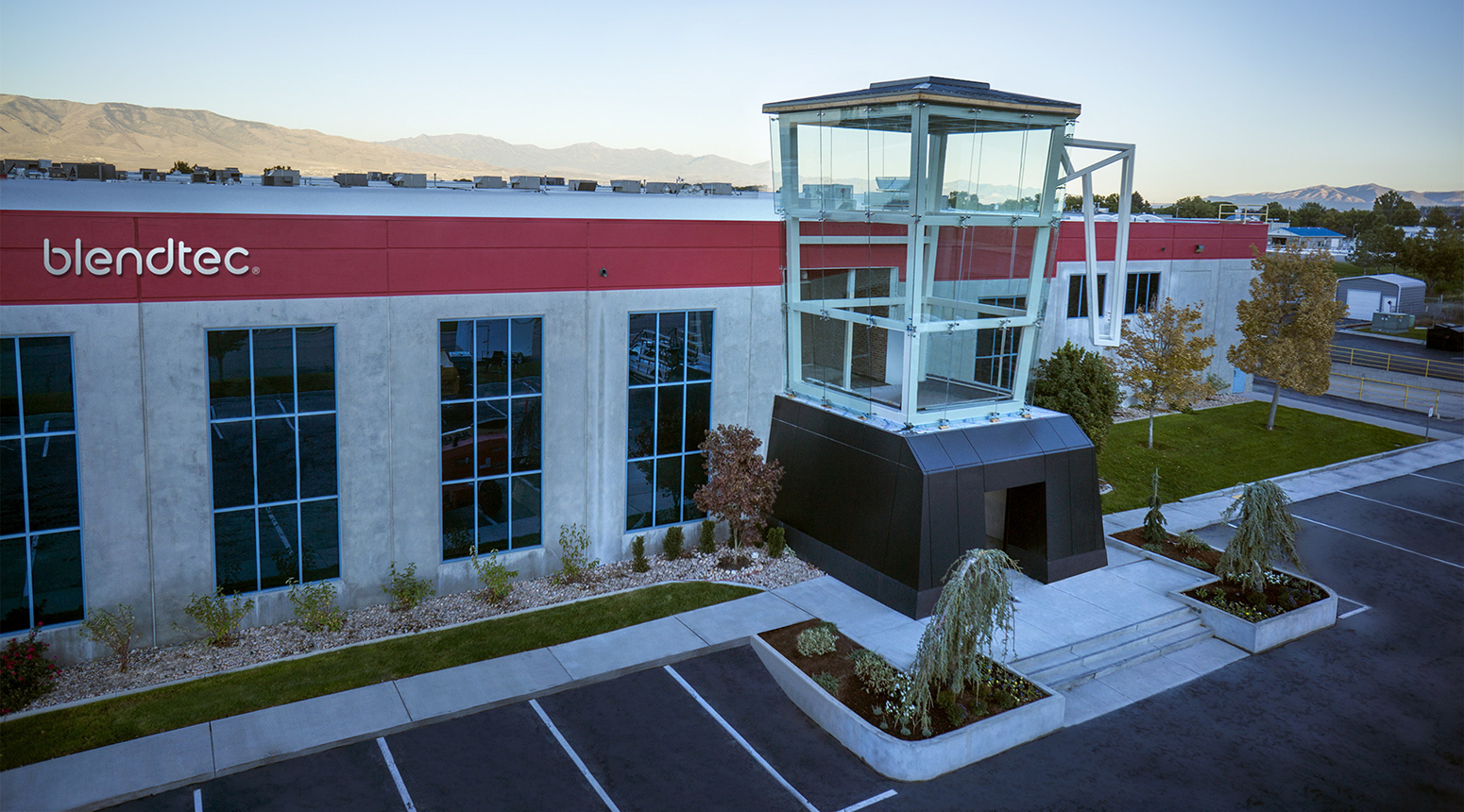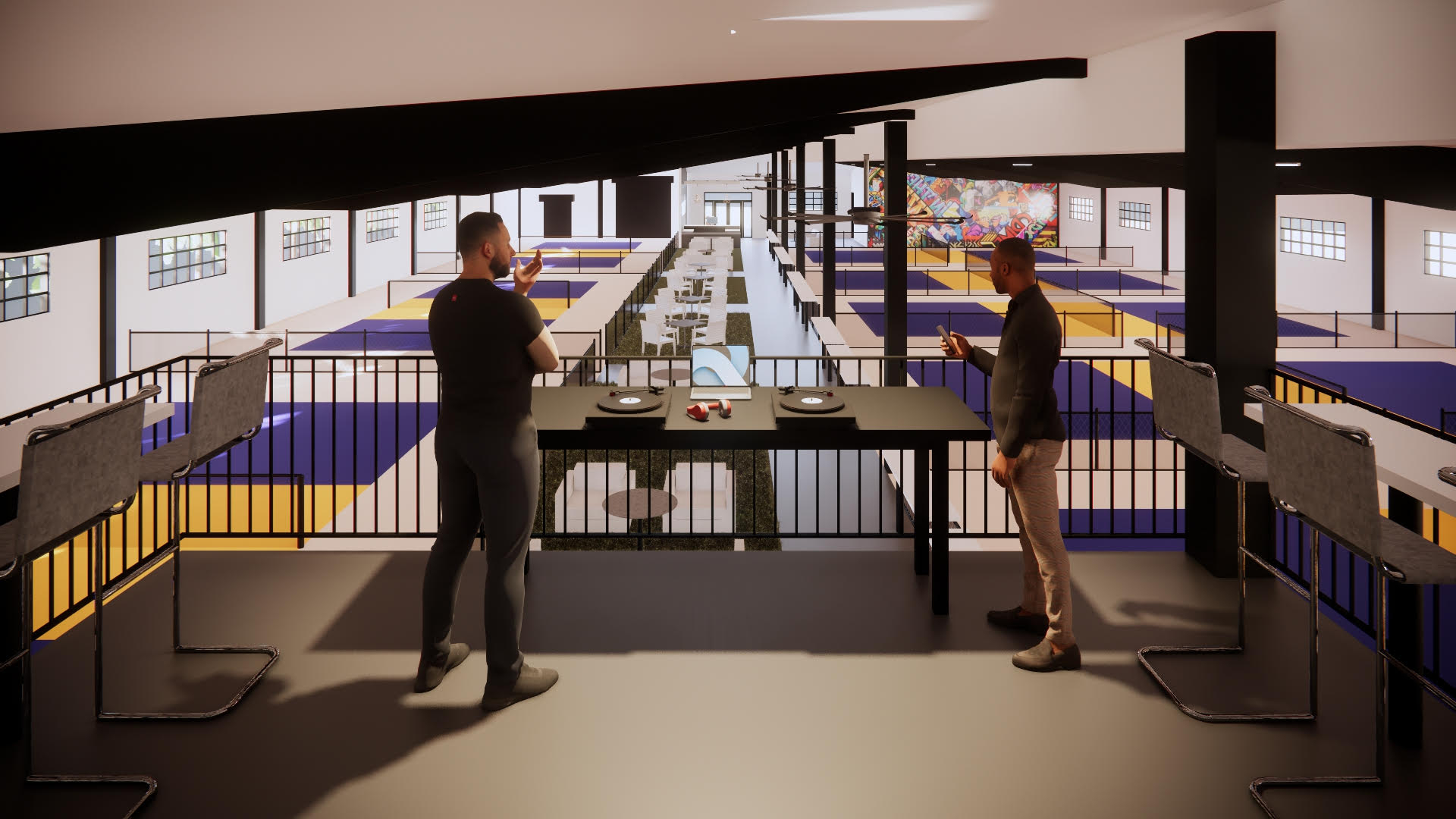Retailers not so long ago seemed poised to carve out huge amounts of store space for online fulfillment. Instead, the bigger trend has been for industrial real estate to move closer to these stores and their customers, some say. “Industrial has pivoted to serve retailers and digitally native brands,” said Cushman & Wakefield managing director Helen Paul, who co-leads a New York-based industrial and logistics team. “The focus is on getting closer and faster and evolving through the demand of the consumer.”
More from C+CT
How Retail and Multifamily Work Together
How Retail and Office Work Together
How Retail and Hotel Work Together
The need to keep products flowing to warehouses, doorsteps and store shelves also has spurred closer ties between retail and industrial specialists.
Cushman & Wakefield started focusing on cross-sector collaboration nearly a decade ago, but demand keeps on accelerating for the services made possible by this approach, said Alanna Joy Loeffler, Americas retail services managing director of business strategy. “It’s what we like to call unified commerce,” she said. “It’s about taking into account all the sales channels and bringing them together into one strategy for a retailer, with a real estate solution that helps them holistically.”
For its part, JLL’s Retail Industrial Task Force offers services in areas such as supply chain consulting, retail and e-commerce distribution, urban logistics, capital markets and retail development. The multidisciplinary team launched in the wake of the pandemic after many chains were caught flat-footed by the surge in e-commerce demand.
Going Small
Industrial occupiers continue to build and lease large warehouses on the outskirts of cities, but some of the sector’s strongest demand is for smaller buildings closer to retail customers in infill markets, explained John Morris, Americas president of CBRE Industrial and Logistics.
Noting that average U.S. industrial leasing activity has trended smaller in terms of square footage over the past couple of years, Morris said the imperative to offer same-day or next-day fulfillment is “the biggest single driver of the trend.”
In a reflection of strong demand and limited supply, smaller-format buildings of less than 25,000 square feet posted a low-2% vacancy rate in the second quarter, according to data from CBRE Econometric Advisors. By comparison, that number stood at 9.4% for assets in the range of 700,000 to 1.2 million square feet and 7.9% for those ranging from 300,000 to 700,000 square feet. In short supply, so-called megawarehouses of more than 1.2 million square feet also posted a low, vacancy rate, at 2.1%, CBRE said.
So far this year, CBRE has tracked 62.7 million square feet of new leases and renewals involving buildings of less than 25,000 square feet, added vice president of global industrial and retail research James Breeze. That number stood at 57.5 million square feet in October 2023.
“Infill on Steroids”
Paul described the industrial and logistics landscape in New York City as “infill on steroids,” as industrial occupiers vie for smaller, closer-in sites capable of serving the city’s densely populated and, in many cases, affluent neighborhoods. “We are constrained by the dense and complicated real estate that we have within New York,” she said. “There’s a lot of hub-and-spoke infrastructure, as well as hyperlocal fulfillment. We don’t even call it last mile; these are more like last-touch facilities.”
These buildings often serve retailers’ e-commerce and brick-and-mortar channels simultaneously, Paul said. “They are adapted to meet the demands of urban consumers.”
Digitally native brands also work with Cushman & Wakefield’s DNB Next team to roll out brick-and-mortar stores and industrial infrastructure, said Loeffler, who leads the team. “We have developed a process around educating these new and emerging retailers about real estate and things like the different permits and team members they will need for their buildout and store-growth strategies to succeed,” she said. “Especially in the last few years, [DNB Next] has grown to include our industrial teams, who focus on distribution warehousing and e-commerce to bring it all together.”
DNB Next also provides data analytics around decisions like when a company’s volumes are high enough to shift away from third parties and start handling logistics independently, Loeffler added.
Hybrid Buildings
As Morris sees it, the COVID-era expectation of retailers allocating much more square footage for storage and fulfillment within their own stores “has not materialized significantly.” Todd Caruso, CBRE Retail Services lead for the Americas, also noted that “we’ve not seen many examples where there is a clear line of distinction between the retail/sales area and the industrial/fulfillment section in the back.” Rather than carving out areas for fulfillment, Caruso said, a likelier direction for mass-market retailers is to use existing store spaces for pickup and returns of online purchases. Target, Kroger and Whole Foods Market have been doing this for some time, he said.
But here and there, retailers do continue to experiment with hybrid retail-industrial buildings and layouts. Mountain West Commercial Real Estate retail broker Preston Miller jokingly referred to the configuration as “the retail mullet,” a hairstyle often described as “business in the front, party in the back.” He said: “I’ve done a couple of deals where there will be retail in the front and then they’ll actually drop-ship out of the back.”
One of those deals was Lime Ricki’s 3,000-square-foot location in Murray, Utah. The women’s swimwear retailer uses about 1,000 square feet for a front-of-the-store showroom and has set the rest aside for fulfillment. “They put in a wall and then behind that, they drop-ship,” Miller explained. “They process all their online shopping right there. There’s a retail presence that generates sales tax revenue, but it has a very industrial feel in the back.”
Meanwhile, in the area around Utah cities Lehi and American Fork, operators like King’s camouflage outlet, Bucked Up, Enso Rings and Taylor Carpets and Flooring have storefronts that face the high-visibility Interstate 15 while the rest of their buildings are used for fulfillment, Miller said. “All these tenants want signage on I-15,” the broker explained. Another example, about 30 miles north, is the hybrid building operated by Utah-based national brand Backcountry. “They have a 100,000-square-foot warehouse out in West Valley, but you can go to it and shop,” Miller said. And retail and warehousing operations also are combined in buildings occupied by high-end blender retailer Blendtec in Orem, Utah, and 3D printing company GoEngineer, which moved into a former big-box store in Midvale, Utah.

With its three-story-tall blender sculpture, which doubles as a conference room, Blendtec’s headquarters in Orem, Utah, blends elements of office, in-store retail and industrial logistics and fulfillment. Photo courtesy of Blendtec
Because infill industrial buildings are closer to populated areas, government officials sometimes require developers to make them more visually appealing. Instead of a tilt-up structure of unadorned concrete, that could mean investing in facades, landscaping and other elements that are more typical of retail projects. “Industrial developers are playing a little bit out of their box,” Miller said. “It isn’t so different now from retail.”
While rents for such assets tend to be higher, occupiers can sometimes save money by consolidating their back-office, industrial and retail functions within that building. “Twenty years ago, those might have been separate buildings and spaces,” Miller said. “Now you’re able to justify one larger space that is a little nicer and that customers will feel OK about visiting.”
Industrial-to-Retail Conversions
Cushman & Wakefield increasingly leases formerly industrial-only buildings to retail, entertainment or hybrid operators, Paul said.
The latter tenants include residential kitchen-and-bath companies that sell to both contractors and homeowners, as well as restaurant supply houses shopped by restaurateurs and amateur chefs. These sites need to have consumer-facing storefronts served by parking, as well as loading docks and enough room for freight trucks. “You need to be close enough to the city that you can draw those consumers or those industry professionals into your location,” Paul noted. “At the same time, you have to have the right real estate to fulfill orders and satisfy your industrial needs.”
Brokers also are leasing more industrial assets to entertainment tenants like pickleball, tennis and soccer. These operators tend to need large-format buildings with column-free spaces and 50-foot-high ceilings, Loeffler said. “There’s not a lot of that type of product available in urban retail markets.”
This year, Padel Chicago leased a former industrial building in Chicago to create a venue for the global sport of padel with its elements of tennis, squash and pickleball. The operator plans to open early in 2025 with five indoor courts, member’s lounges, locker rooms, a co-working space and a coffee shop and bar. Cushman & Wakefield Chicago director Chip Evans described the former high-bay industrial building as “perfectly suited for refurbishment” for the new use.
JLL announced a similar deal over the summer in which California Smash Pickleball & Social Club leased a 25,300-square-foot industrial building in El Segundo, California. When it opens in the first half of 2025, the repurposed space will offer 10 indoor courts, a dance floor and a bar and restaurant.

California Smash Pickleball & Social Club’s conversion of an industrial building in El Segundo, California will offer 10 indoor courts, a dance floor and a bar and restaurant. Image credit: Studio Unltd

JLL brokered a deal in which a 25,300-square-foot industrial building is being converted into California Smash Pickleball & Social Club. The large-format entertainment concept is slated to open in El Segundo, California, in the first half of 2025. Image credit: Studio Unltd
Retail-Industrial Rent Gaps
In general, Loeffler said, the significantly higher cost of retail space means it rarely makes good financial sense to use back-of-house areas for distribution. But these dynamics do vary by market. In Salt Lake City, the retail-industrial rent gap has narrowed over the years, Miller said. “We do have a scarcity of land out here because of geographical barriers like mountains and lakes so we might be atypical, but the pricing has never been closer.”
Few retailers wanting on-site logistics would be willing to pay upward of $50 per square foot in rent for such space in Salt Lake City’s Class A-plus retail properties. However, some are able to move into well-located B or C centers, a favorable trend for landlords of those properties. “Lime Ricki is a good example,” Miller said. “The rent is such that they can justify an industrial warehouse in the back and retail in the front.”
For Miller, the closer interaction between retail and industrial is an example of Marketplaces Industry resilience. “Whether you’re talking about the dot-com bubble, the 2008 recession or COVID, you’ve always got people who say that retail is going to die, and it just never does. Retail partnering more with industrial is just the latest pivot.”
By Joel Groover
Contributor, Commerce + Communities Today